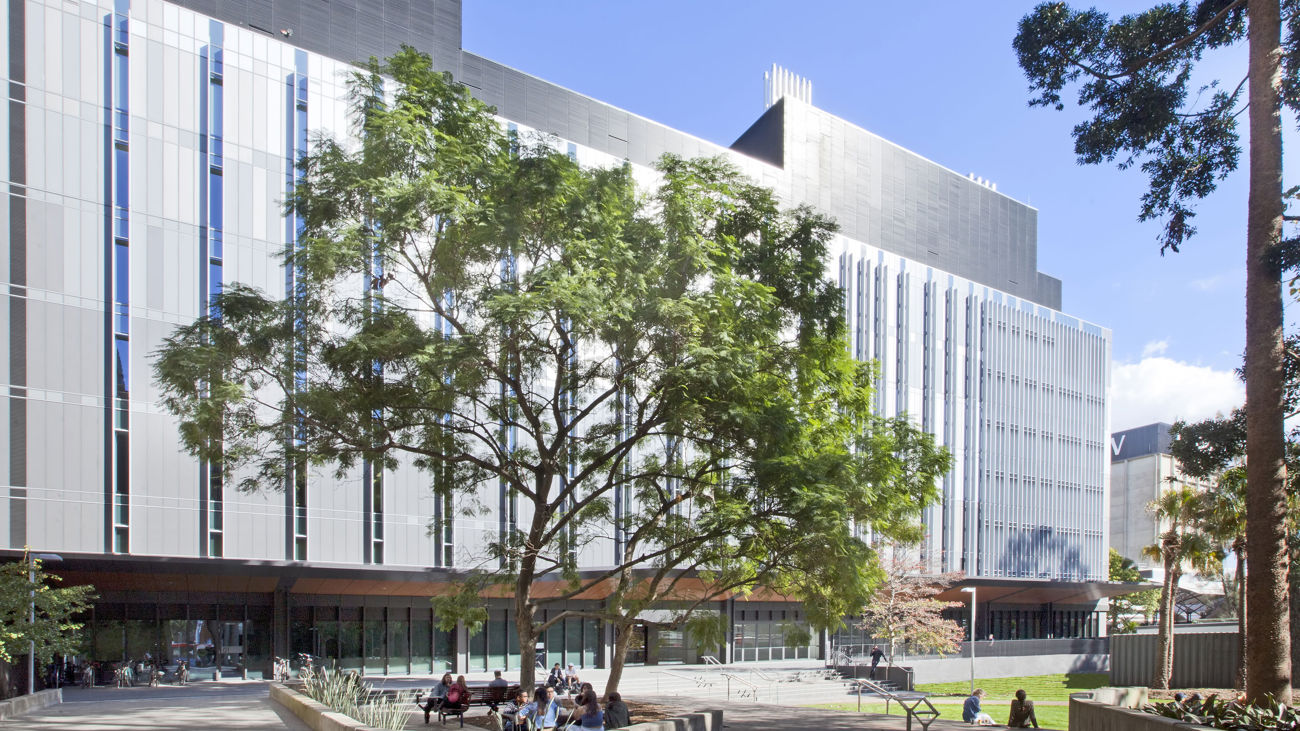Multiplex continues to deliver at UNSW Sydney Biosciences

Premier global construction company Multiplex has reached completion on Stage Two of UNSW Sydney's Biological Sciences Building upgrade, continuing the regeneration and expansion of the world-class Biomedical Precinct at UNSW.
Located at the Kensington campus in Botany Street, Randwick, Stage Two of the UNSW Biological Sciences Building involved the complete refurbishment and modernisation of the existing D26 Biological Sciences Building, and the seamless linking between the new and existing buildings within the Biosciences Precinct.
Designed by high profile architects Woods Bagot in collaboration with design teams TTW, NDY, ARUP and Surface Design, the refurbishment of D26 Biological Sciences Building included the strip out and demolition of the existing internal fit-out across eight levels and the construction of two new levels of rooftop plant.
Stage Two also includes the construction of brand new mixed-use wet and dry labs and innovative teaching and laboratory spaces such as anatomy and animal research houses.
"We are proud of our ongoing partnership with UNSW and of our contribution to the campus – not just in terms of the world-class education spaces we have delivered, but in helping to cement UNSW's reputation as one of the best research and teaching universities in the world," said David Ghannoum, Regional Managing Director Multiplex New South Wales.
Undergraduate teaching laboratories are now located on the Ground Floor and Level 1, along with a café and combined schools office. Contemporary shared research laboratories are also located on Levels 2 to 5 and the new animal research facility is located on Level 6.
Stage Two commenced in the second quarter of 2017, and according to Multiplex more than 2600 people worked on site throughout construction.
The new Biosciences Stage 2 Building provides students and researchers with a contemporary research and teaching environment including new mixed use wet and dry laboratories. UNSW Faculty of Science research projects set to benefit from the new facility include understanding the origin and evolution of life on Earth; determining the effects of microplastics on the marine environment; tracing past environmental change using limestone deposits in caves and Antarctic ice cores; protecting Australian ecosystems that support our iconic wildlife; examining the evolutionary costs and benefits of sex; discovering the secrets of life at a molecular level; and using molecular biosciences to understand cancer, infectious, metabolic and neurodegenerative diseases.
Challenges faced during construction include the footprint of the building being wedged between three operating buildings, with minimal storage areas and difficult access for deliveries. Multiplex also had to maintain an extremely safe environment for students as the building remained in use within the live construction site. Design features include carbon fiber structural reinforcing to maximise the floor to floor ceiling criteria, integration with Stage 1 to create a one building approach and a panelised window wall system spanning slab to slab creating a curtain wall like façade system.
This combined project marks a major milestone in the development of UNSW's Biomedical Research Precinct on the upper campus. The University's vision is to enhance interdisciplinary teamwork by bringing together biologists and environmental, earth and biomedical scientists, reinforcing synergies between the research groups, schools and faculties.
The Biomedical Research Precinct, which also encompasses the Lowy Cancer Research Centre and the Wallace Wurth School of Medicine, represents an investment of over $500 million in UNSW's medical research facilities and infrastructure, and aims to provide a world-class environment for the training of the next generation of top researchers and technically qualified graduates.
This is Multiplex's eighth project with UNSW. Multiplex delivered Stage 1 of the Biological Sciences Building development in 2017, a new 21,000 m2 building with capacity for more than 650 staff and students.
Multiplex has also delivered the UNSW's University Terraces student accommodation, its Materials Science and Engineering Building (Hilmer Building) plus fitout, the Tyree Energy Technologies Building, the refurbished Roundhouse building and most recently the new $187 million Science and Engineering Building (SEB).




